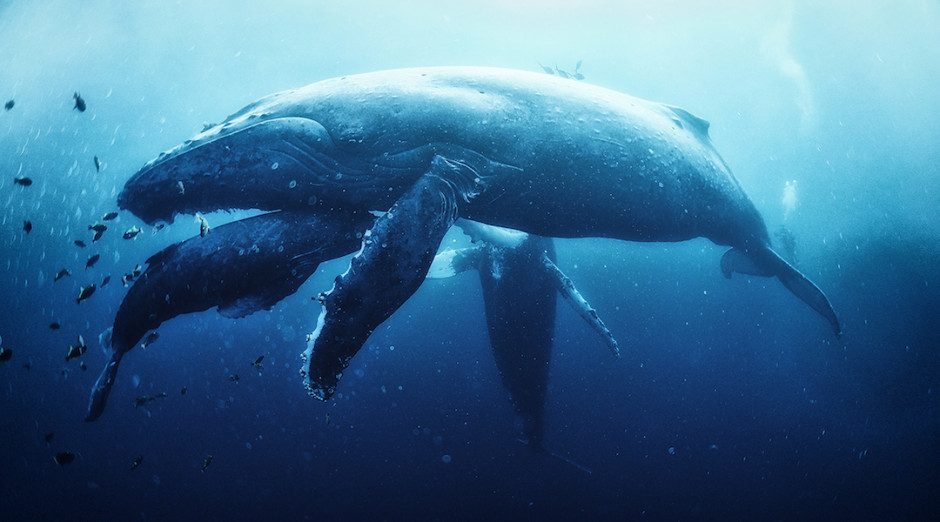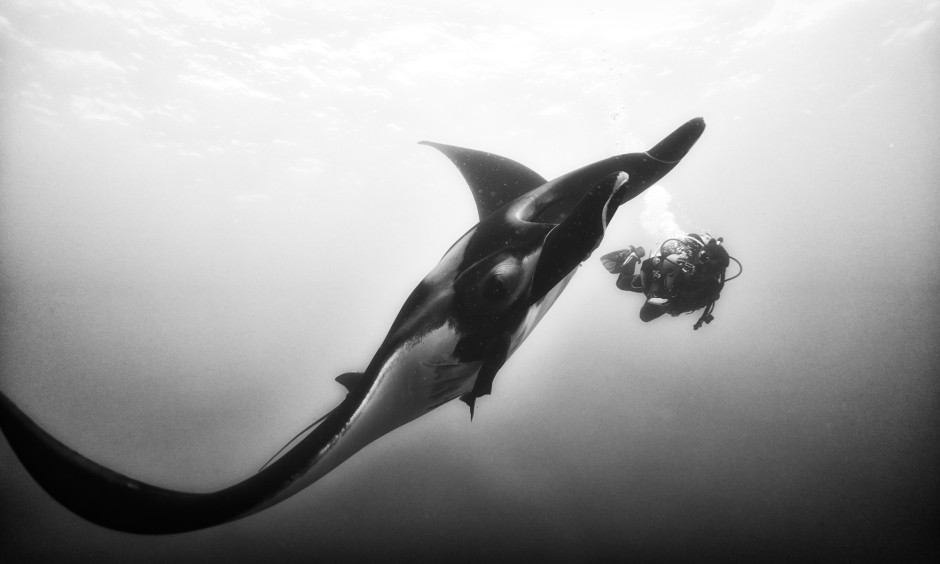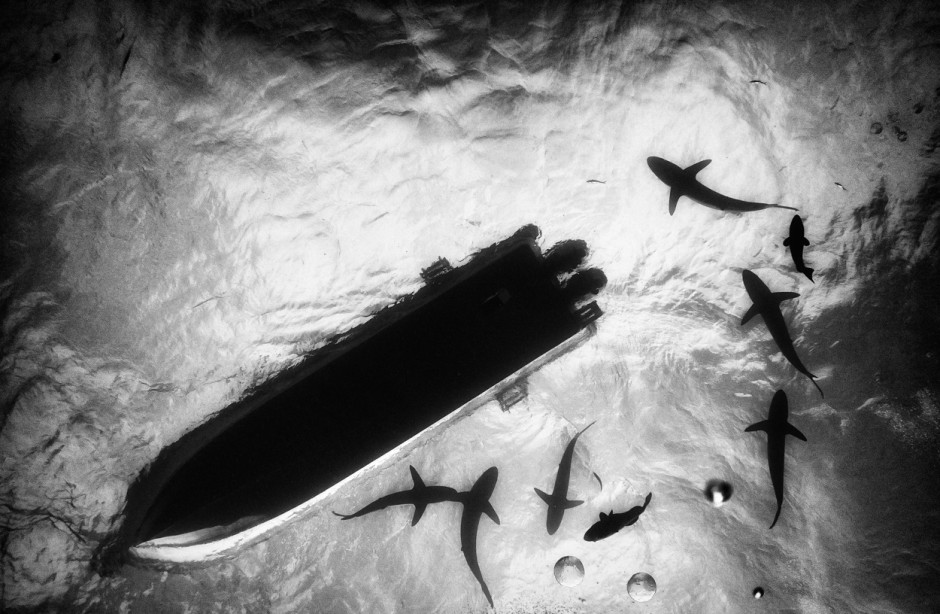Editor’s Note: Anuar Patjane is a Mexican photographer who has recently gained a lot of attention for his underwater works. Photo #4, below recently won Second Place in the World Press Photo contest this year (Nature category) and won First Place in National Geographic’s Traveler Photo Contest in 2015 (Outdoor Scenes category). What’s equally impressive is that he shot all these images with a Sony RX100 — a point and shoot.

I am a social anthropologist, born in Mexico. I began diving a long time ago and found that a number of my truest passions lie under the sea. Equally important to me is making photographs, chasing that perfect moment and light, telling a story through the lens, so it makes sense that underwater photography has been part of my life.

Photo: Anuar Patjane Floriuk

Being underwater is different in many obvious ways from being on land - but photographically too. Underwater, it's a struggle to find as much light as possible, especially as you venture deeper and light is swallowed up. Physically, you have to fight currents, be fit enough to be swimming and treading water all the time, deal with fatigue, and keep an eye on your air pressure as well. While you do all these things, you have to keep your eye out for moments unfolding, compositions, and the same aesthetic principals that you have photographing on land.

This particular image was taken 800km off the coast of Los Cabos, Mexico - a small group of islands called Revillagigedo. I'd done an expedition even further in 2014, going an additional 500km out to sea to explore places so remote they're still unnamed, but we didn't manage to dive with any whales (though we could hear them sometimes). I returned as far as Revillagigedo in 2015 with dreams of diving with humpbacks. Nearing the end of our first day there, I saw a massive shadow approaching and I knew it was something big. I was honored to spend probably 5 minutes with this mother whale and her calf - sometimes just centimetres away from her. She swam onward to the other divers, which is the moment I knew I had to capture. I knew my friends would give the whale some space, so I went for a wide composition and this perfect split-second perfect moment came out of it - what Henri Cartier-Bresson would have called "the decisive moment."

This is the same mother whale and calf from before, who were traveling with a third whale - a male who was escorting them along. I am sorry to say that while we were diving on another day, orcas attacked. It was - in my opinion - an intelligent and planned attack on the whales. It broke my heart to see the calf taken away by the orcas. When the mother whale realized, she surface, and made a noise that chilled me right down to my marrow. I will never, ever forget the mourning in that sound. As a person, the whole encounter has left its mark on me.

People are often surprised to hear I make these images with a "simple" point and shoot camera. I use the Sony RX100 and it's far from simple, but it certainly looks like a basic camera in your hands. I get a lot of sideways looks and eye-rolls from other photographers, and I just smile and play the part of the amature "noob" with a small camera. The truth is that it has a really awesome sensor, paired with an f/1.8 wide-angle Zeiss lens.

Sure, on very large prints I do get some pixels, but to me it's part of my vision. It gives the feeling of old film, I think, which is a feature I actually like in my work. I'd much rather set aside megapixels and sensor size, not to mention all that massive gear most people are using, and instead focus on my vision, composition, the play of elements within the frame. As I mentioned, when diving and shooting, you're swimming, fighting currents, watching your tank, finding light, and then trying to compose and shoot. I want gear that works with me, not against me. For me, that's this Sony.
Intermission

I've found diving has made me a more compassionate person. As you encounter enormous animals, or wide open spaces, or untouched nature - you're left feeling dwarfed, honored, excited, and also with a sense of empathy that we're all here, sharing this one Earth.

Sentiment aside, jumping into the ocean remains one of life's great rushes for me. Is there anything more exciting that literally leaping into the unknown? We never know what we will find on the other side. The thrill of exploring, of weightlessness, the light playing on the water - it's addictive and it never gets old.

While i continue to face condescending looks with my "little" point and shoot, I think this is probably the future of underwater photography. Given the shift in the quality available in smaller cameras, I bet you an excellent bottle of tequila that in 10 years we are all going to dive using compact cameras; is just a matter of time.

To those looking to try underwater photography, I say don't go out and buy the most expensive and biggest camera that you can get. Start with a small rig and little by little discover the kind of photography that you want to do, then you can understand and buy the right equipment for the kind of photos you wish to make. Go out to shoot what you love with what you have and don't worry about equipment, and always use your intuition and passion; these two things are the soul of photography.
